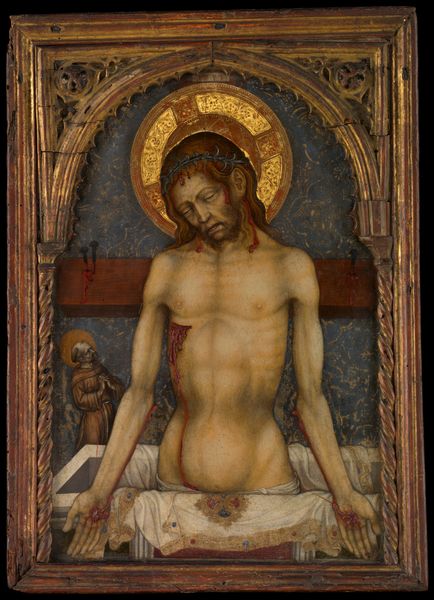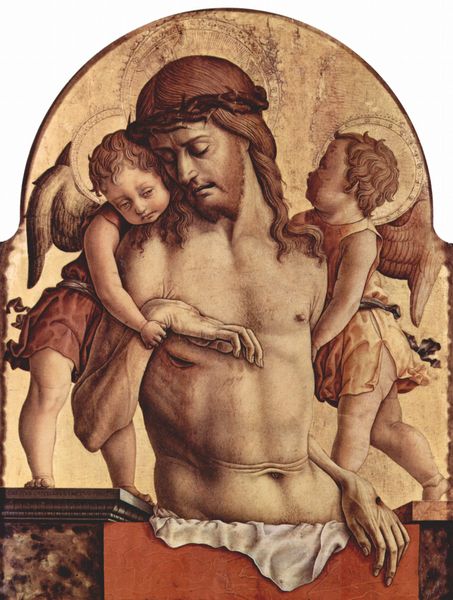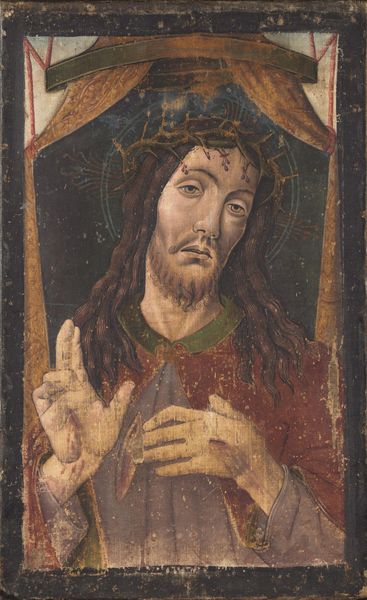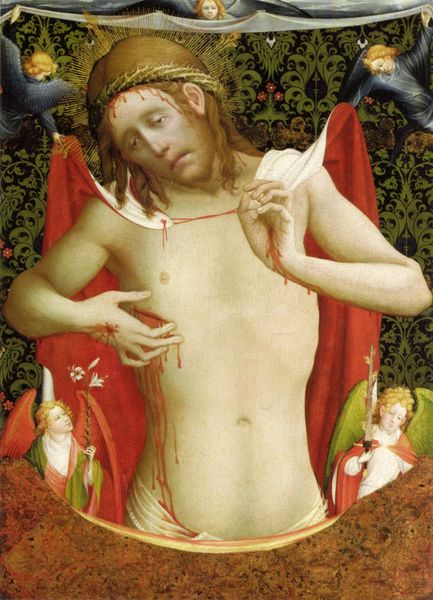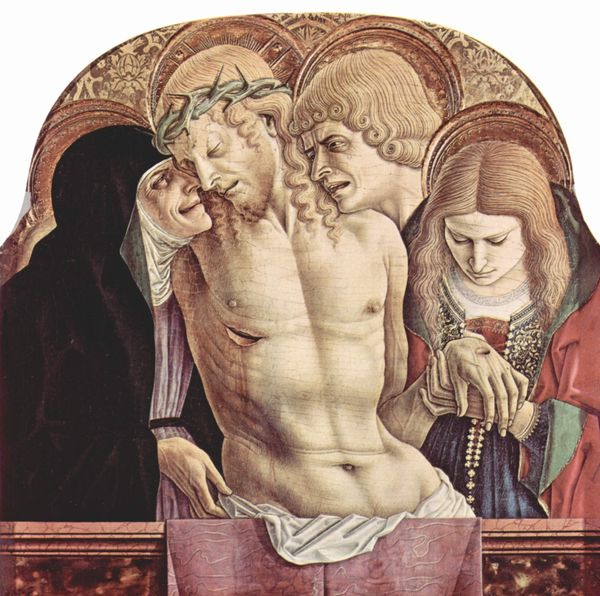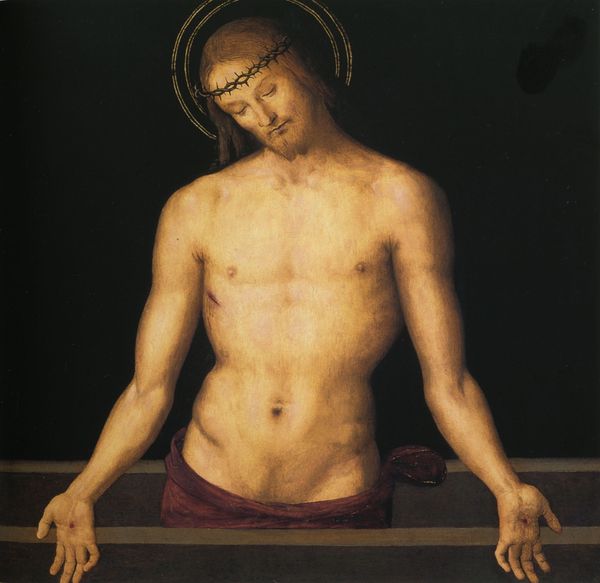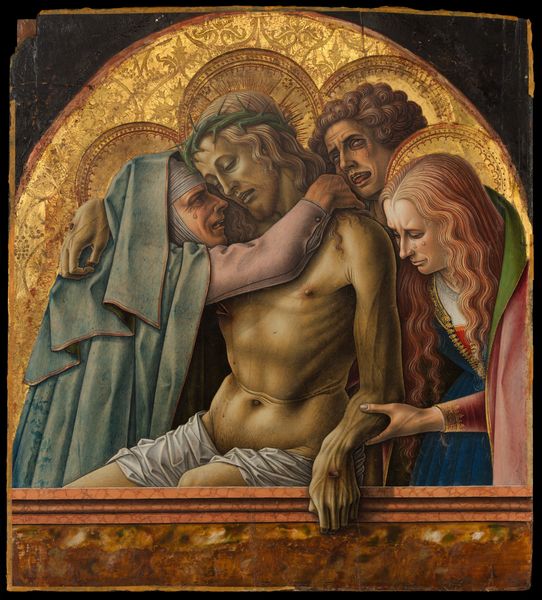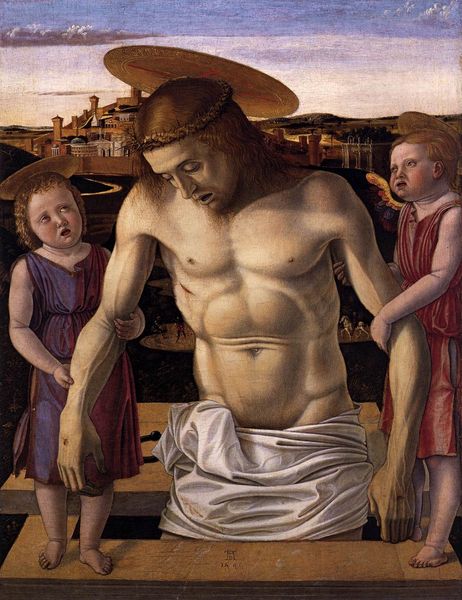
painting, oil-paint
#
portrait
#
medieval
#
painting
#
oil-paint
#
sienese-school
#
figuration
#
oil painting
#
portrait head and shoulder
#
history-painting
#
academic-art
#
nude
#
realism
Copyright: Public domain
Curator: This striking image is "Man of Sorrow," painted around 1345 by Pietro Lorenzetti. It's an oil painting depicting a wounded, nearly nude Christ, framed within a simulated architectural niche. Editor: He seems suspended in a kind of melancholic amber. I am drawn in by his downcast eyes. There's a sense of quiet suffering that really permeates the canvas, wouldn’t you say? Curator: Absolutely. The wounds, while rendered with a certain realism, aren't overtly graphic. It is that sense of weariness, of burden, that is palpable. And it’s interesting how the architectural frame seems to both contain and highlight his figure, directing our focus. Considering its construction is a painting too, the level of detail with oil paints really enhances that liminal state. Editor: Precisely! It challenges our perception. It's as if the divine is brought into a constructed, tangible reality. The use of oil paint, itself a costly material at the time, indicates patronage invested not just in devotion, but also to make material and production meet a common intention, even in the representation of religious martyrdom. Curator: It makes one think about the role of artistic labor. I like what you were mentioning just now, of its role. Someone had to painstakingly prepare the surface, mix the pigments, and then, layer upon layer, bring this vision into being. This piece moves from suffering into skilled labor. Editor: And that labor involved very specific, globally sourced materials, right? Pigments derived from minerals and plants found around the world that, in some cases, would need extensive chemical processes before use. Understanding those material connections adds another layer to our understanding of the image, transforming the work of devotion. Curator: Thinking about the devotion piece, the way that Lorenzetti captures this humanity is, I think, incredibly poignant. You see that fatigue in the slump of his shoulders. It makes a rather removed biblical narrative rather… close, would you agree? Editor: Very much so. Looking at the materiality gets us past just iconography and brings us into an understanding of an elaborate structure of artistic production. It humanizes, in a very tangible way, the making of a picture such as this. Curator: Well said. It is quite a testament to Lorenzetti's talent and to our continuous inquiry and reflection of works such as this one.
Comments
No comments
Be the first to comment and join the conversation on the ultimate creative platform.

